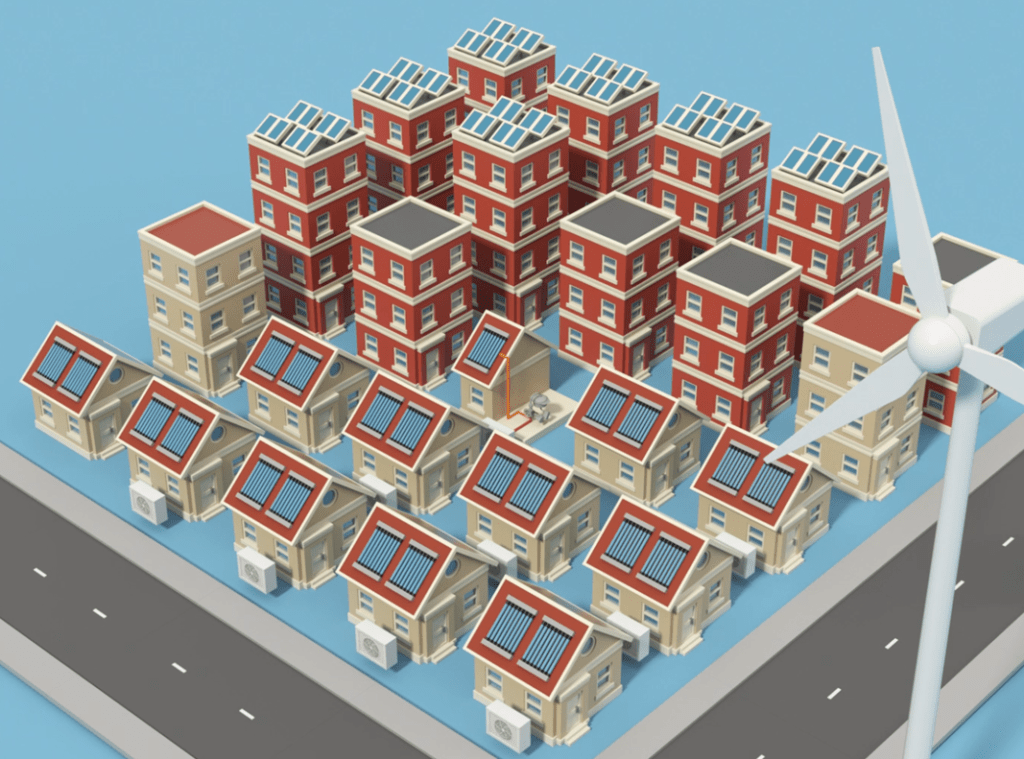HEAT-INSYDE targets a hybrid functionality, balancing central (grid) and decentral renewable energy supply, allowing configuration in both heat and electricity systems and creating new opportunities for grid flexibility
Central – Heat battery connected to a district heating grid
This anticipates the increasing interest in district heating in many European countries, addressing renewable energy from geothermal or solar thermal sources, or valorisation of industrial waste heat. It aims to deliver low temperature heat sufficient for direct space heating and to boost temperatures for domestic hot tap water.
A complex interplay of different heat flow plays a role in the actual performance of this system, on different time scales. The key feature of this heat battery configuration is the post-heating of the heat delivered by the heating grid, either for space heating or domestic hot water. The return temperature to the heating grid is the tunable parameter to optimise the power output of the grid, thus to optimise grid design.
Decentral – Heat battery-heat pump combination connected to the electricity grid
Many European countries are starting to face the limitations of existing electricity grids, not being able to absorb the peak load of local generation. With the electrically driven heat pump at the beginning of a potential growth spurt, another severe load to the grid is foreseen in terms of a peak in demand. There is thus a crucial need for flexibility in the electricity grid and in accelerating the uptake of decentralised renewable energy production.
The decentralised application of the heat battery will optimize the application of heat pumps by exploiting their small temperature lift with low power and overcoming their disadvantage of high temperature outputs with high power. This hybrid combination will boost the application of heat pumps, reducing their power demands (i.e. reducing their grid impact) and drastically increasing their efficiency (i.e. COP value, electricity-heat conversion). This decentralised application allows to store local surplus electricity supply in local heat, reducing the electricity peak supply load to the grid.

